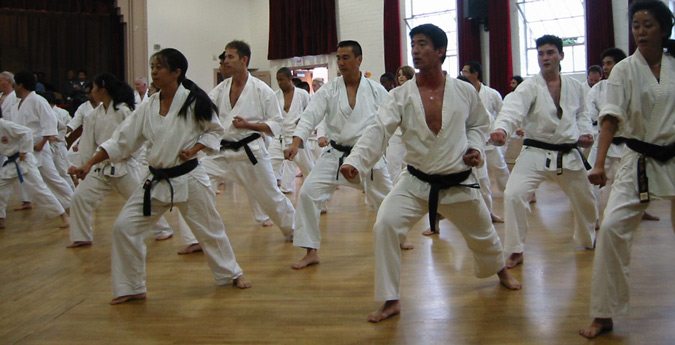FAQs You Need to Know
What is a dojo?
The word “dojo” derives from Japanese and translates as “place of the way” and refers to the space that is used for learning martial arts.
Although the modern dojo is typically filled with students and operates very much like a gym, dojos throughout history were not used so much for training as for ceremonial purposes. In fact, the dojo in ancient times was a prayer hall for Buddhist leaders where they went to meditate, focus on their existence and seek out truth.
Dojos today may encompass just a small studio or may take up an entire building, but in the true sense of the word, it can be any area that’s set aside for practising martial arts.
Many gyms and community halls offer karate and other martial arts training on the premises. In Japan, the dojo is a special place; students respect the dojo by not wearing shoes inside and by ritually cleaning the dojo at the end of each training class.
Sometimes martial arts training is conducted in a less formal area or even outdoors instead of actually inside the dojo, Tai chi for example.
Enquire about martial arts classes available in your local area at dojos, gyms, and fitness or community centres.
What is a Kata?
A group of moves when performed in sequence similating a response to an attack.
Strikes, kicks, blocks and stances are elements that may be included.
The sequence is formed repeatedly to build up strength, co-ordination and reflexes. The pattern (or Kata) is perfected so that it becomes second nature to the student of karate.
On the journey to black belt and beyond the student learns numerous katas.These vary in complexity and are core elements in the discipline.
What is a gi?
The uniform worn by martial arts students. Can be either canvas or cotton material.
Why are there different colored belts?
The belt system was formed to assess skill and knowledge.
As you reach a certain level of skill you will be assessed and graded. The student needs to accumulate a prescribed number of lessons for each belt.The higher the grade the more knowledge and technique will need to be displayed.
Your Sensei determines when you are ready to grade. If you pass grading you’ll progress on to the next level (or color).
You’ll be taught the correct way to tie your belt by either the Sensei or Sempai.
Who is a Sensei?
Sempai or a senior student
Protocol
As a mark of respect you must bow as you enter and exit the dojo.This is a symbolic gesture of humility and a willingness to train and listen to your Sensei. Because there is a lot to learn and you must have a clear mind.
These are traditions that are followed when you are in the dojo.
If you are late for class you must stand at the side of the dojo and get the Sensei’s attention. He will bow you in to the class so you can commence training. If you want to leave for any reason during class you must get the Sensei’s attention again and he will bow you out of the class.
What is “bowing in”? How do you bow in?
Bow in as a gesture of respect to your Sensei and Sempai – standing tall, legs together and arms straight by your side, bend straight form the waist
FAQs you need to know

